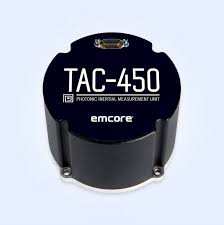A final regulation that requires businesses to treat certain workers as employees rather than as less expensive independent contractors was released by the U.S. Department of Labor on Tuesday. This decision has infuriated business associations and is expected to face court challenges.
It is widely anticipated that the rule will raise labor costs for businesses including haulage, manufacturing, healthcare, and app-based “gig” services that depend on freelancers or contract labor.
The majority of state and federal labor rules, including those about minimum wages and overtime compensation, exclusively affect employees of a corporation. Employees may cost businesses up to 30% more than independent contractors, according to studies.
When workers are “economically dependent” on an organization, the rule will mandate that they be treated as employees rather than independent contractors. It falls short of California’s and other states’ wage laws, which impose even stricter restrictions on independent contracting.
It takes the place of a rule implemented by the administration of Republican former President Donald Trump, which facilitated the classification of employees as independent contractors. Businesses and trade associations will probably file a lawsuit over the new rule.
The Trump administration’s ruling allowed employees who ran their own companies or were able to work for rival firms—for example, a driver who works for Uber Technologies and Lyft—to be classified as contractors.
The new regulation will go into force on March 11.
In a call with reporters on Monday, Acting U.S. Labor Secretary Julie Su stated that low-income workers were most affected by the misclassification of workers as contractors rather than employees because they would have benefited most from legal protections like unemployment insurance and minimum wage.
“The relationship between an employer and employee is the foundation of a century of labor protections for working people,” Su stated.
However, some industry associations contend that the legislation unfairly tilts the odds in favor of classifying workers as employees rather than contractors, depriving millions of workers of opportunity and flexibility.
Marc Freedman, vice president of the U.S. Chamber of Commerce, said in a statement that “making matters worse, the rule is completely unnecessary, as the Department continues to report success in cracking down on bad actors that are misclassifying workers.” The largest business body in the United States, the Chamber, he continued, is thinking of filing a legal challenge against the rule.
RISK TO ‘GIG’ Workers
According to the Labor Department, the rule was created to target sectors where worker misclassification is prevalent, such as the construction and healthcare industries. The most attention has been paid to how it would affect ride-hailing and app-based delivery firms, whose business models rely on contract “gig” labor.
Gig workers may be affected by the rule, according to the Chamber of Progress, a trade association that advocates for tech businesses, depending on how the Labor Department implements it. According to the group, reclassifying independent contractors as employees of businesses would have a detrimental effect on 3.4 million gig workers and result in $31 billion in lost revenue.
Uber and Lyft are among the companies that have voiced worries about the rule, but they have also stated that they do not anticipate it to result in the classification of their drivers as workers. According to a statement from CR Wooters, Uber’s head of federal affairs, the new regulation “does not materially change the law under which we operate.”
“Drivers across the country have made it overwhelmingly clear—in their comments on this rule and in survey after survey—that they do not want to lose the unique independence they enjoy,” Wooters stated.
In separate remarks, DoorDash and Lyft said they did not anticipate the rule changing how they conduct business.
“The majority of Dashers are retired, self-employed, primary carers, students, or have full-time or part-time employment already. DoorDash stated that this is the reason they are not searching for the hours, shifts, or structure of employment.
When deciding whether to classify a worker as an employee or contractor, the Labor Department stated that it will take into account various factors, including the worker’s potential for profit or loss, the level of control an employer has over them, and whether the work is a necessary component of the business.
Business associations have expressed concern that the lengthy number of variables that may be used to classify an employee could lead to misunderstandings and uneven outcomes, which could then result in expensive class actions claiming that employees were incorrectly classified.

















